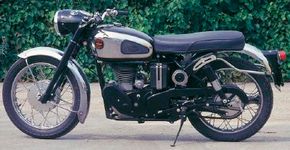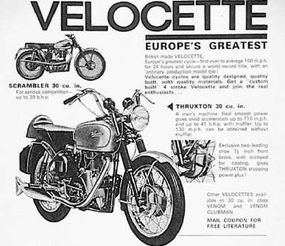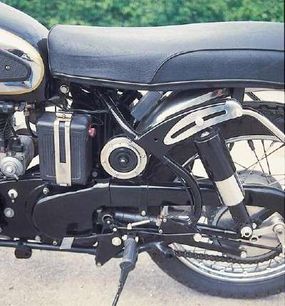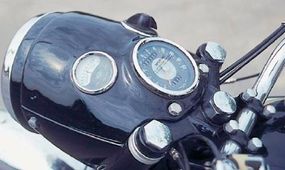The 1961 Velocette Venom motorcycle was from a British bike maker convinced that its large-displacement single-cylinder engines were the equal of the twins favored by most rivals. With a top speed of 100 mph or so, the 1961 Velocette Venom motorcycle was a good supporting argument.
Advertisement
Velocette was founded in 1904 under the name Veloce.
Its first motorcycles were powered by four-stroke singles, but when the British company switched to two-strokes in 1913, the name was changed to Velocette. Though four-strokes reappeared in the 1920s, the company name was retained.
When most rivals added large-displacement twins to their lineups, Velocette stuck with vertical singles. One exception was the LE, introduced in 1949, a small, scooter-like machine powered by a 200-cc horizontally opposed flathead twin.
The single-cylinder Venom was introduced in the late 1950s, and while it was a capable sporting machine, it was overshadowed in the marketplace by various British twins.
Its 500-cc engine produced a very respectable 36 horsepower, enough to propel the Venom to near 100 mph. A Venom equipped with the "Clubman" option could top the century mark.
In the mid-1960s the Thruxton Venom appeared, named after a popular racing circuit. Despite an updated appearance and a bit more power, the Thurxton couldn't save Velocette, and the company folded in 1968.
Continue to the next page to see more 1961 Velocette Venom motorcycle pictures.
For more great motorcycle articles and pictures, check out:
- Classic Motorcycles
- How Motorcycles Work
- Other Classic Motorcycles
Advertisement





